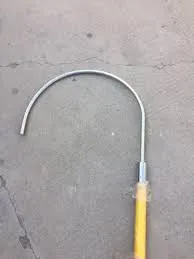
-
 Afrikaans
Afrikaans -
 Albanian
Albanian -
 Amharic
Amharic -
 Arabic
Arabic -
 Armenian
Armenian -
 Azerbaijani
Azerbaijani -
 Basque
Basque -
 Belarusian
Belarusian -
 Bengali
Bengali -
 Bosnian
Bosnian -
 Bulgarian
Bulgarian -
 Catalan
Catalan -
 Cebuano
Cebuano -
 Corsican
Corsican -
 Croatian
Croatian -
 Czech
Czech -
 Danish
Danish -
 Dutch
Dutch -
 English
English -
 Esperanto
Esperanto -
 Estonian
Estonian -
 Finnish
Finnish -
 French
French -
 Frisian
Frisian -
 Galician
Galician -
 Georgian
Georgian -
 German
German -
 Greek
Greek -
 Gujarati
Gujarati -
 Haitian Creole
Haitian Creole -
 hausa
hausa -
 hawaiian
hawaiian -
 Hebrew
Hebrew -
 Hindi
Hindi -
 Miao
Miao -
 Hungarian
Hungarian -
 Icelandic
Icelandic -
 igbo
igbo -
 Indonesian
Indonesian -
 irish
irish -
 Italian
Italian -
 Japanese
Japanese -
 Javanese
Javanese -
 Kannada
Kannada -
 kazakh
kazakh -
 Khmer
Khmer -
 Rwandese
Rwandese -
 Korean
Korean -
 Kurdish
Kurdish -
 Kyrgyz
Kyrgyz -
 Lao
Lao -
 Latin
Latin -
 Latvian
Latvian -
 Lithuanian
Lithuanian -
 Luxembourgish
Luxembourgish -
 Macedonian
Macedonian -
 Malgashi
Malgashi -
 Malay
Malay -
 Malayalam
Malayalam -
 Maltese
Maltese -
 Maori
Maori -
 Marathi
Marathi -
 Mongolian
Mongolian -
 Myanmar
Myanmar -
 Nepali
Nepali -
 Norwegian
Norwegian -
 Norwegian
Norwegian -
 Occitan
Occitan -
 Pashto
Pashto -
 Persian
Persian -
 Polish
Polish -
 Portuguese
Portuguese -
 Punjabi
Punjabi -
 Romanian
Romanian -
 Russian
Russian -
 Samoan
Samoan -
 Scottish Gaelic
Scottish Gaelic -
 Serbian
Serbian -
 Sesotho
Sesotho -
 Shona
Shona -
 Sindhi
Sindhi -
 Sinhala
Sinhala -
 Slovak
Slovak -
 Slovenian
Slovenian -
 Somali
Somali -
 Spanish
Spanish -
 Sundanese
Sundanese -
 Swahili
Swahili -
 Swedish
Swedish -
 Tagalog
Tagalog -
 Tajik
Tajik -
 Tamil
Tamil -
 Tatar
Tatar -
 Telugu
Telugu -
 Thai
Thai -
 Turkish
Turkish -
 Turkmen
Turkmen -
 Ukrainian
Ukrainian -
 Urdu
Urdu -
 Uighur
Uighur -
 Uzbek
Uzbek -
 Vietnamese
Vietnamese -
 Welsh
Welsh -
 Bantu
Bantu -
 Yiddish
Yiddish -
 Yoruba
Yoruba -
 Zulu
Zulu


Dec . 24, 2024 10:24 Back to list
surveyors measuring wheel
The Versatility and Importance of Surveyors' Measuring Wheels
In the realm of surveying and construction, precision is paramount. Surveyors use a variety of tools to ensure accuracy in their measurements, and one of the most indispensable instruments in their arsenal is the measuring wheel. Often referred to as a surveyor's measuring wheel, this tool has become synonymous with distance measurement, offering both efficiency and accuracy on the job site.
Understanding the Measuring Wheel
A measuring wheel, typically composed of a large, rolling wheel attached to a long handle, is designed to measure distances by counting the number of revolutions of the wheel over the ground. When the wheel rolls, it turns a mechanism that records the distance traveled. This method of measuring is particularly useful for landscaping, construction, and roadwork, where the terrain can be uneven or inaccessible to traditional measuring tapes. The simplicity of the design makes it easy to operate, allowing surveyors to quickly gather data while moving across various terrains.
Advantages of Using Measuring Wheels
One of the primary advantages of using a measuring wheel is the speed at which distances can be measured. Traditional measuring techniques, such as tape measures, can be time-consuming, especially over large areas. The measuring wheel allows surveyors to cover ground swiftly, making it ideal for extensive projects such as land surveying or when mapping out large construction sites.
Additionally, measuring wheels are incredibly user-friendly. There is no need for specialized training; anyone can learn to use a measuring wheel in a matter of minutes. This accessibility means that teams can quickly mobilize on projects, allowing for better workflow and increased productivity.
surveyors measuring wheel

Another significant advantage is the accuracy of the measurements. High-quality measuring wheels can provide precise readings, often with an accuracy of within a fraction of a percent, which is crucial for ensuring that construction projects adhere to specifications. This is particularly important in fields such as civil engineering and architecture, where even minor discrepancies can lead to significant costs or structural failures.
Applications in the Field
The applications of measuring wheels extend far beyond simple distance measurement. Surveyors often use them in conjunction with other measuring tools to provide comprehensive data analysis. For instance, when conducting land surveys, a measuring wheel can assist in establishing property boundaries, analyzing topographical changes, or even in the design of landscaping plans.
In addition to surveying, measuring wheels are also commonly used in the construction industry. Contractors frequently deploy measuring wheels to lay out the foundations of buildings, determine material quantities, or assess distances required for safety compliance. This versatility demonstrates that the measuring wheel is not just a tool for surveyors but an essential instrument for anyone working in construction-related fields.
Conclusion
In conclusion, the surveyor's measuring wheel stands out as an essential tool in the surveying and construction industries. Its ability to provide fast and accurate measurements over varied terrain makes it invaluable for professionals. As technology continues to evolve, measuring wheels have also seen improvements, with features such as digital displays and advanced measuring systems that enhance their functionality. Ultimately, the measuring wheel is a classic tool that combines simplicity, efficiency, and accuracy, ensuring that it remains a staple in the toolkit of surveyors and construction workers alike. Whether marking out property lines, planning construction projects, or executing large-scale landscaping plans, the measuring wheel continues to play a crucial role in the precision-driven worlds of surveying and construction.
Latest news
What Are Construction Tools and How Are They Used?
NewsJul.11,2025
Professional-Grade Duct Rodding Tools for Superior Cable Installation
NewsJul.11,2025
Enhancing Safety and Efficiency with Modern Hot Stick Solutions
NewsJul.11,2025
Empowering Cable Installation with Advanced Rodder Solutions
NewsJul.11,2025
Elevate Your Cable Installation Projects with Cable Pulling Tools
NewsJul.11,2025
Efficient Cable Handling Solutions: Cable Rollers for Sale
NewsJul.11,2025











